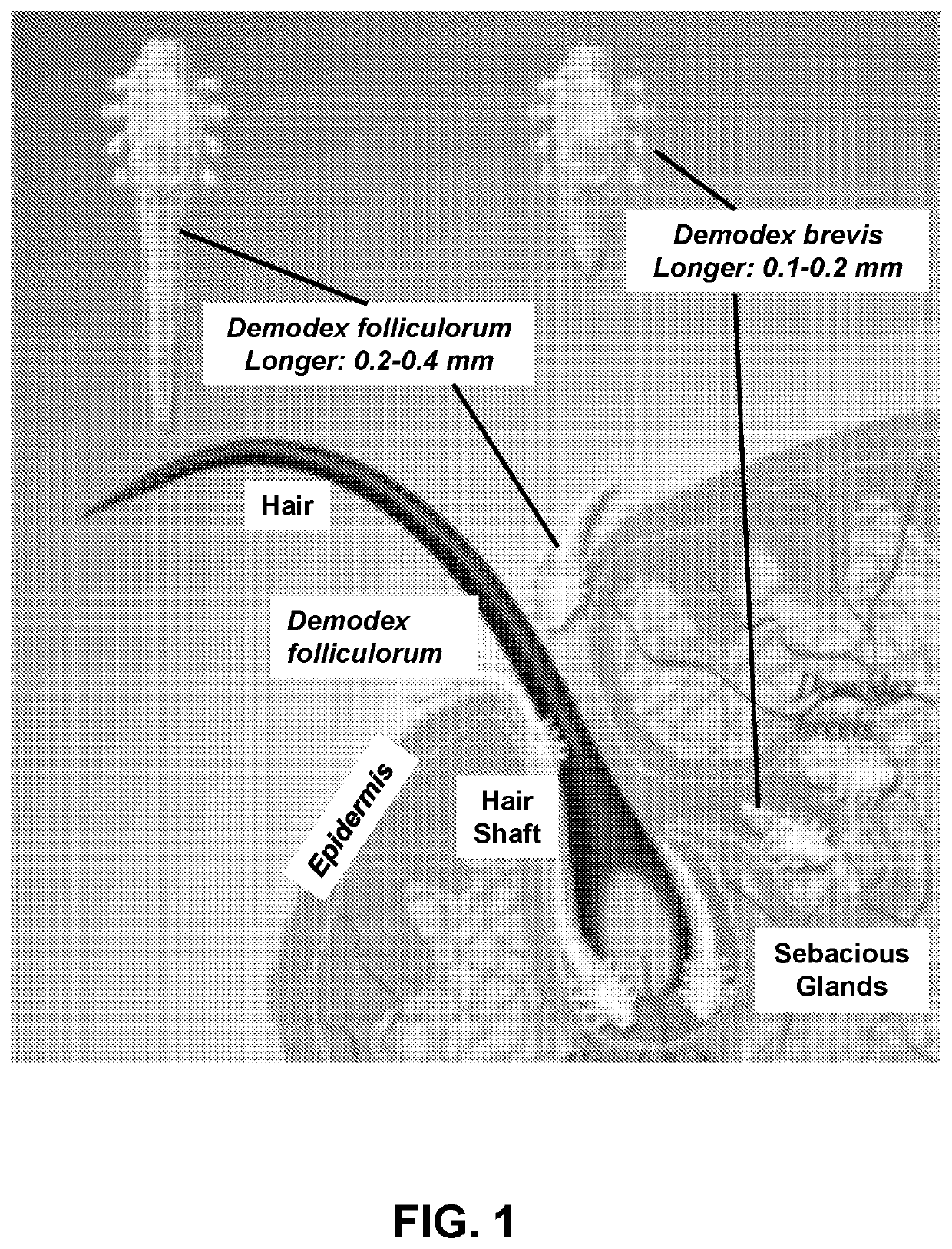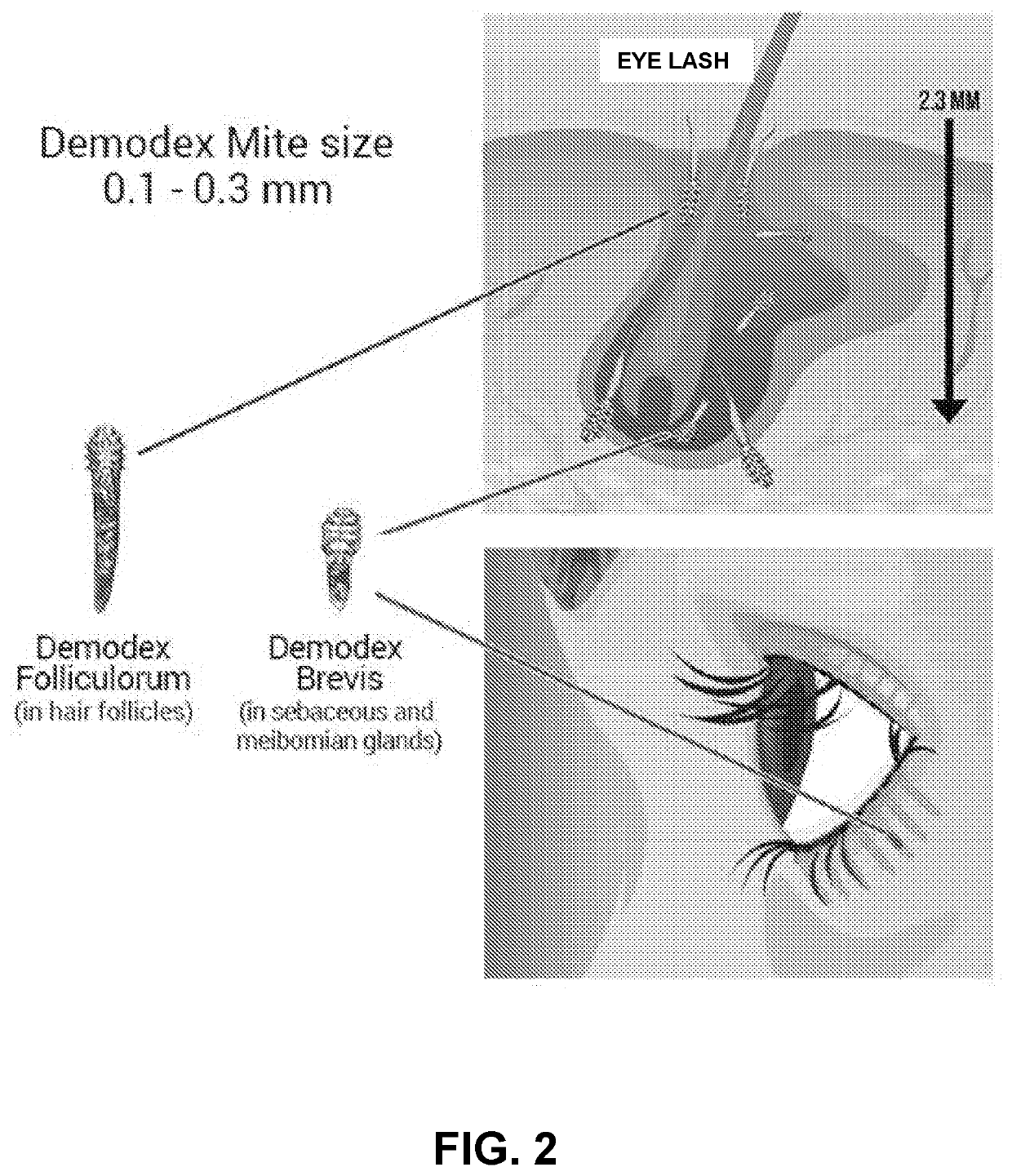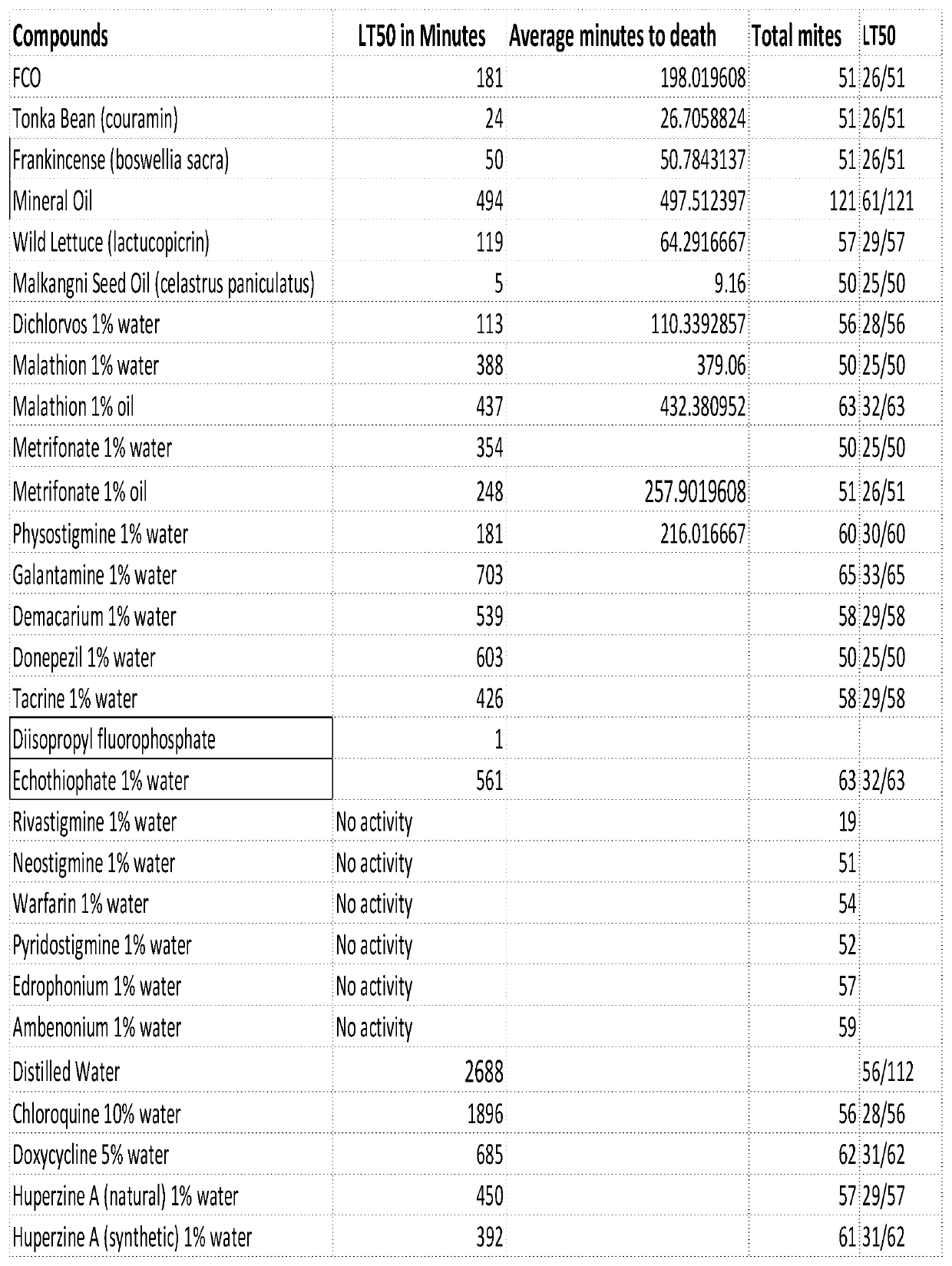Treating Autoimmune Disorders with Acetylcholinesterase Inhibitors
a technology of acetylcholinesterase and autoimmune disorders, which is applied in the direction of immunological disorders, inorganic non-active ingredients, drug compositions, etc., can solve the problems of medication-induced lupus, inconvenient use of ipl in lupus patients, and inability to commercially viable pharmacological solutions
- Summary
- Abstract
- Description
- Claims
- Application Information
AI Technical Summary
Benefits of technology
Problems solved by technology
Method used
Image
Examples
example 1
bitors
[0247]Lead clinical candidates include many acetylcholinesterase inhibitors (AChE Inhibitors) that can act on the AChE pathway inside the mite. AChE inhibiting compounds have known knockout effects on mites. This area has been heavily researched by the agricultural chemical industry. Based on these findings we can hypothesize AChE inhibitors will be effective potential agents in reducing Demodex mites in the human body. The potent AChE inhibitor, dichlorvos 1%, has already been used on one patient to achieve complete and continued remission of Papulopostular Rosacea (PPR) a disease that is believed to be caused by Demodex mites. PCT Pub. No. WO 2015 / 017328.
[0248]With respect to safety, AChE inhibitors have been studied extensively in medicine and are most commonly used as oral agents in the treatment of Alzheimer's Disease (AD). Many FDA-approved AChE inhibitors can be repositioned to treat autoimmune diseases by acting against Demodex. There are also failed AChE inhibitors, t...
example 2
ns, Including Ivermectin
[0250]Ivermectin is derived from the avermectins, a class of highly active broad-spectrum, anti-parasitic agents isolated from the fermentation products of Streptomyces avermitilis. Ivermectin is a mixture containing at least 90% 5-O demethyl-22,23-dihydroavermectin A1b and less than 10% 5-O-demethyl-25-de(1-methylpropyl)-22,23-dihydro-25-(1-methylethyl)avermectin A1a, generally referred to as 22,23-dihydroavermectin B1a and B1b; or H2B1a and H2B1b, respectively. The respective empirical formulas are C48H74O14 and C47H72O14; with molecular weights of 875.10 and 861.07, respectively. The structural formulas are:
[0251]Any of the methods provided herein may use a compound that is from the avermectin family. Accordingly, in any of the claims provided herein, the specific compound ivermectin, may be replaced by the family of compounds known as avermectin, or any of the specific compounds of the avermectin family, including abamectin, doramectin, emamectin, ivermec...
example 3
ne and / or Hydroxychloroquine
[0252]Any of the methods provided herein may use a compound that is chloroquine or hydroxychloroquine (see, e.g., FIG. 4).
[0253]Hydroxychloroquine was approved for medical use in the United States in the 1950s and is on the World Health Organization's List of Essential Medicines, with the chemical structure:
[0254]Chloroquine has the structural formula:
Example: Administration and Formulation
[0255]Salts and Prodrugs: The invention contemplates pharmaceutically active compounds either chemically synthesized or formed by in vivo biotransformation to compounds set forth herein.
[0256]Compounds of this invention and compounds useful in the methods of this invention include those of the compounds and formula(s) described herein and pharmaceutically-acceptable salts and esters of those compounds. In embodiments, salts include any salts derived from the acids and bases of the formulas herein which are acceptable for use in human or veterinary applications. In embod...
PUM
| Property | Measurement | Unit |
|---|---|---|
| surface area | aaaaa | aaaaa |
| concentration | aaaaa | aaaaa |
| weight percent | aaaaa | aaaaa |
Abstract
Description
Claims
Application Information
 Login to View More
Login to View More - R&D
- Intellectual Property
- Life Sciences
- Materials
- Tech Scout
- Unparalleled Data Quality
- Higher Quality Content
- 60% Fewer Hallucinations
Browse by: Latest US Patents, China's latest patents, Technical Efficacy Thesaurus, Application Domain, Technology Topic, Popular Technical Reports.
© 2025 PatSnap. All rights reserved.Legal|Privacy policy|Modern Slavery Act Transparency Statement|Sitemap|About US| Contact US: help@patsnap.com



